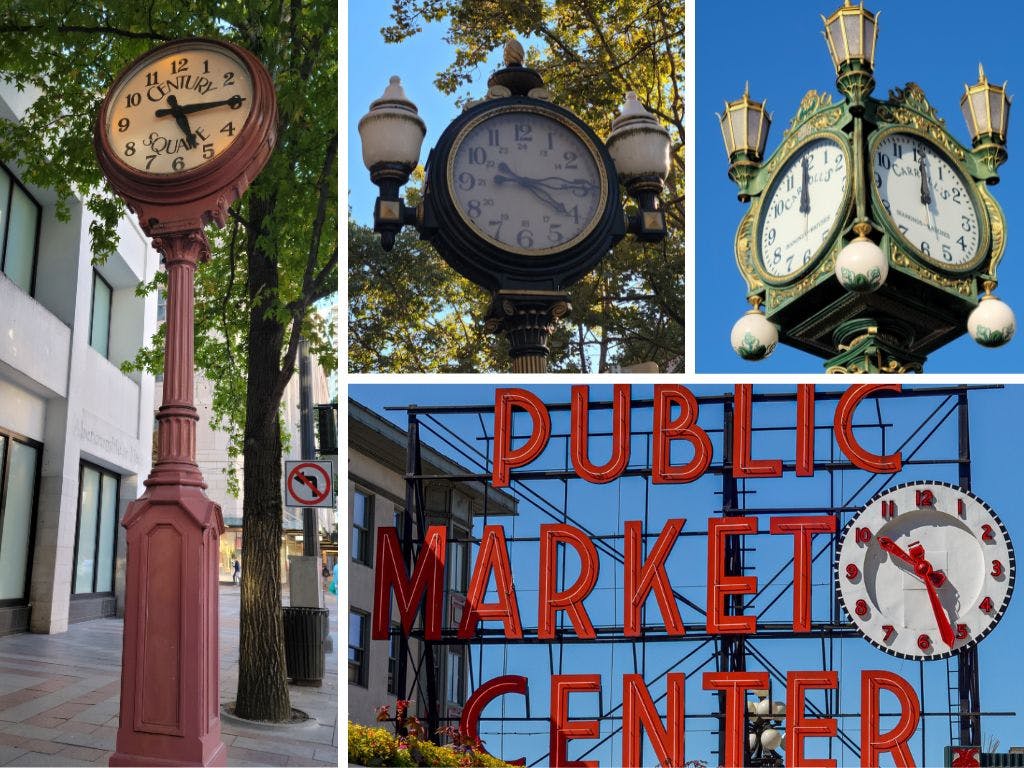Joseph Mayer was always on time – at least he should have been. His expertise in the clock-making business helped put Seattle on the map as the City of Clocks. Street clocks to be exact.
By the mid-1930s there were at least 40 clocks dotted on walkways around the city. A person could see 16 street clocks from the corner of 4th Avenue and Pike Street, according to a Seattle Times article from the day.
Mayer was the mayor of street clocks in Seattle, then a young city with a reputation for making some of the best outdoor timepieces. Also known as post clocks, they once numbered at least 55 in the Emerald City – far more than any other metropolis in the nation, historians note, if not the world.
The clocks were important features for people who typically could not afford a pocket watch. These necessities of everyday life helped Seattleites keep time – and stay on time.
Street clocks weighed anywhere from one to four tons and were made of cast iron and copper with big faces peering through glass displays and often touting a nearby business. So many were painted dark green that there is even a color called “street clock green.”
There was a boom in retail shops and banks in Seattle after the 1897 gold rush and jewelers began marking their locations with street clocks. Mayer & Brothers created hundreds of these clocks, which were shipped to cities mostly in the western U.S. The company was known as a manufacturing jeweler, which, in addition to street clocks, created jewelry, sterling silver tableware, household clocks and a variety of pins, medals and souvenir spoons. Its factory was at the corner of what is today Dexter Avenue North and Harrison Street in South Lake Union.
Joseph Mayer helped bring street clock components from Boston manufacturer E. Howard Co. Starting in 1906, he would complete and enhance the clocks in Seattle. Many of them were not only grand but also hallmarks to the businesses associated with them and to the workers and neighbors who passed the standard bearer day and night.
They were no cheap timepieces. The clocks cost at least $3600 in 1922, according to records, or more than $65K today. And despite facing the harshest of Seattle weather, the tall landmarks stood the test of time for many decades. Few exist today.
One street clock not featured in the video is awaiting a new home. The clock once located at the intersection of Northeast 45th Street and Union Bay Place Northeast, just east of University Village, was outside Benton’s Jewelers.
The ornate timepiece is now in storage pending the completion of a new senior care building. The site of the refurbished clock will be at 3200 Northeast 45th Street, Aegis of Laurelhurst, which is tentatively scheduled to open in 2024.
Seattle street clocks are protected under a city historic landmarking ordinance, which requires the dozen or so remaining clocks must be placed in public view. The new senior residence will feature the clock at the building’s courtyard entryway, according to local reports.
For the return of the vintage clock, you could say that it’s only a matter of time!




